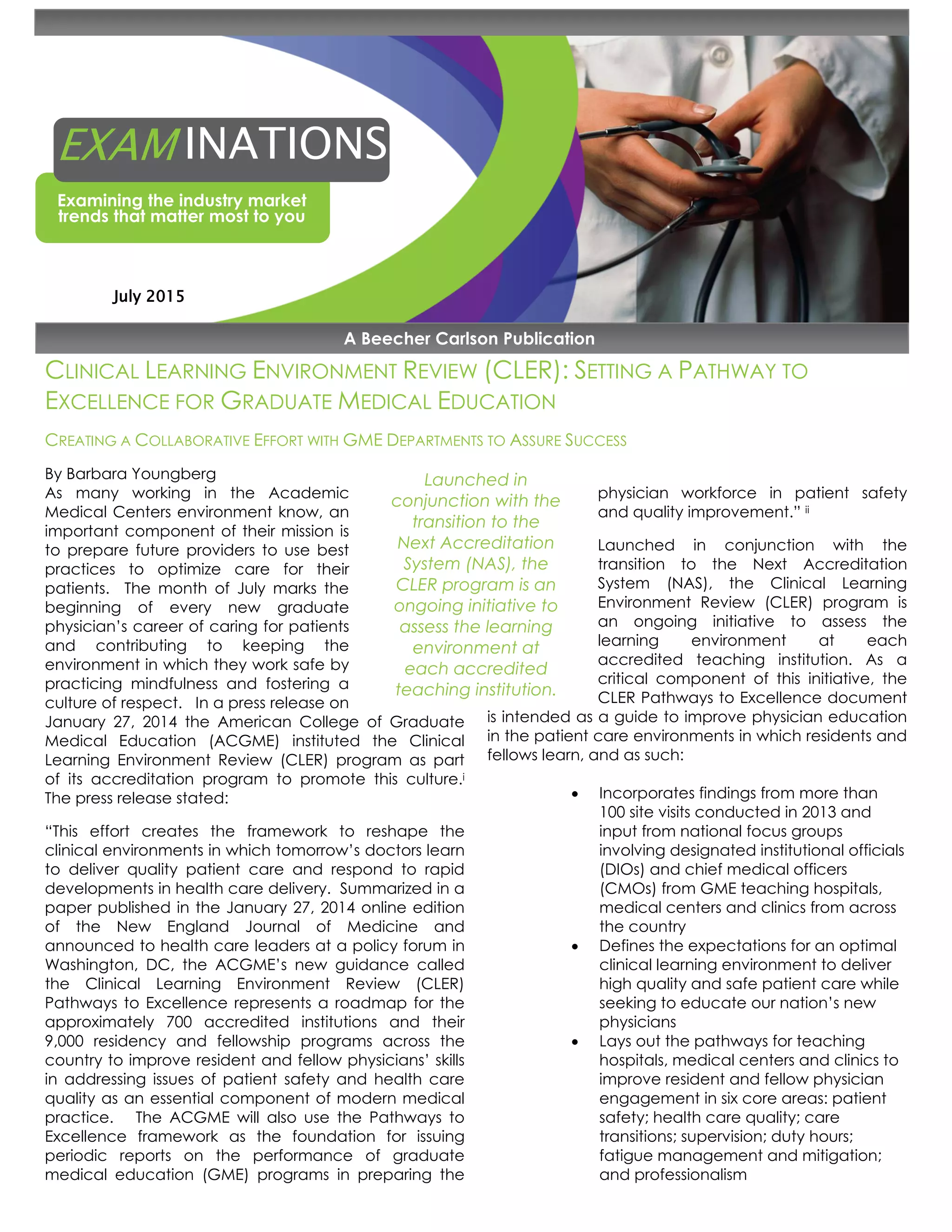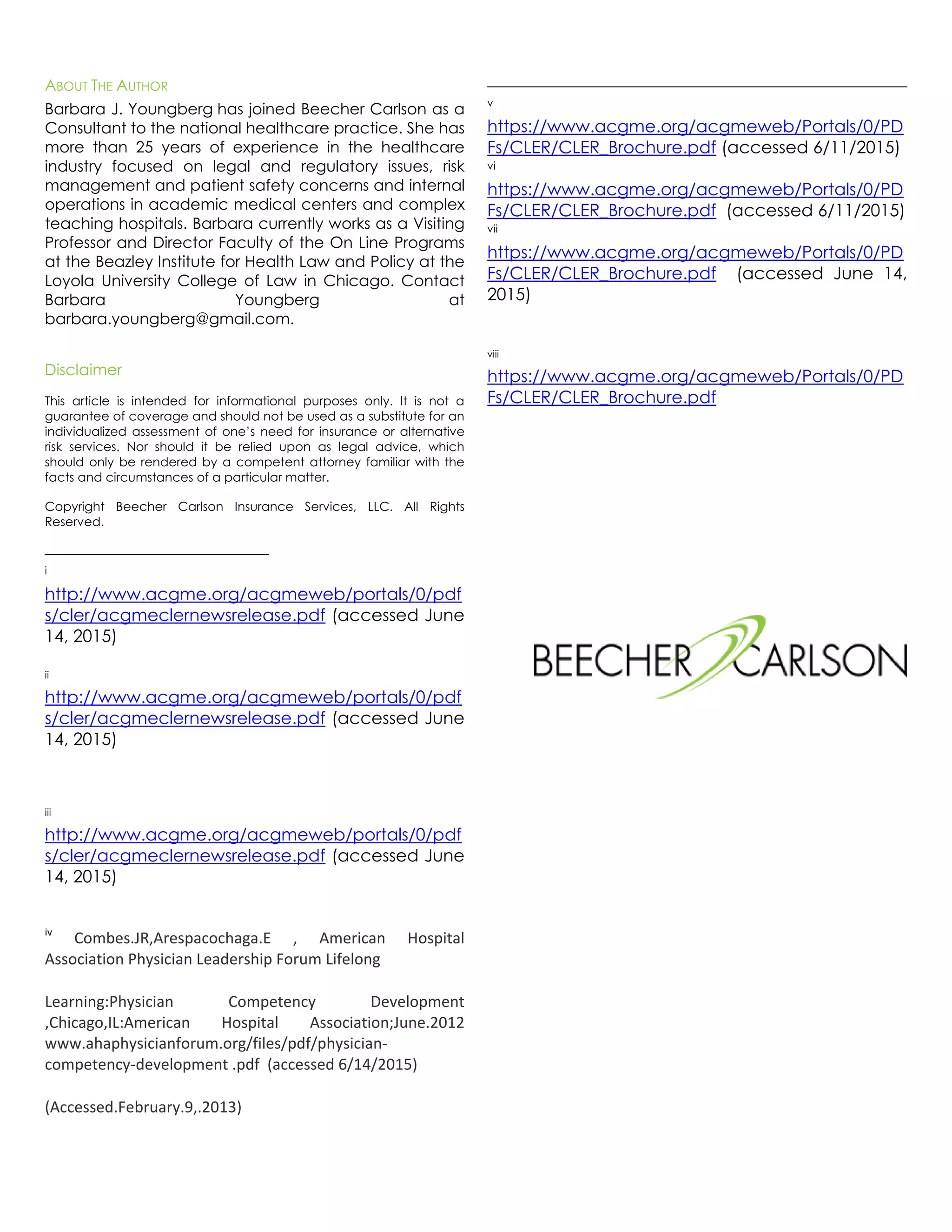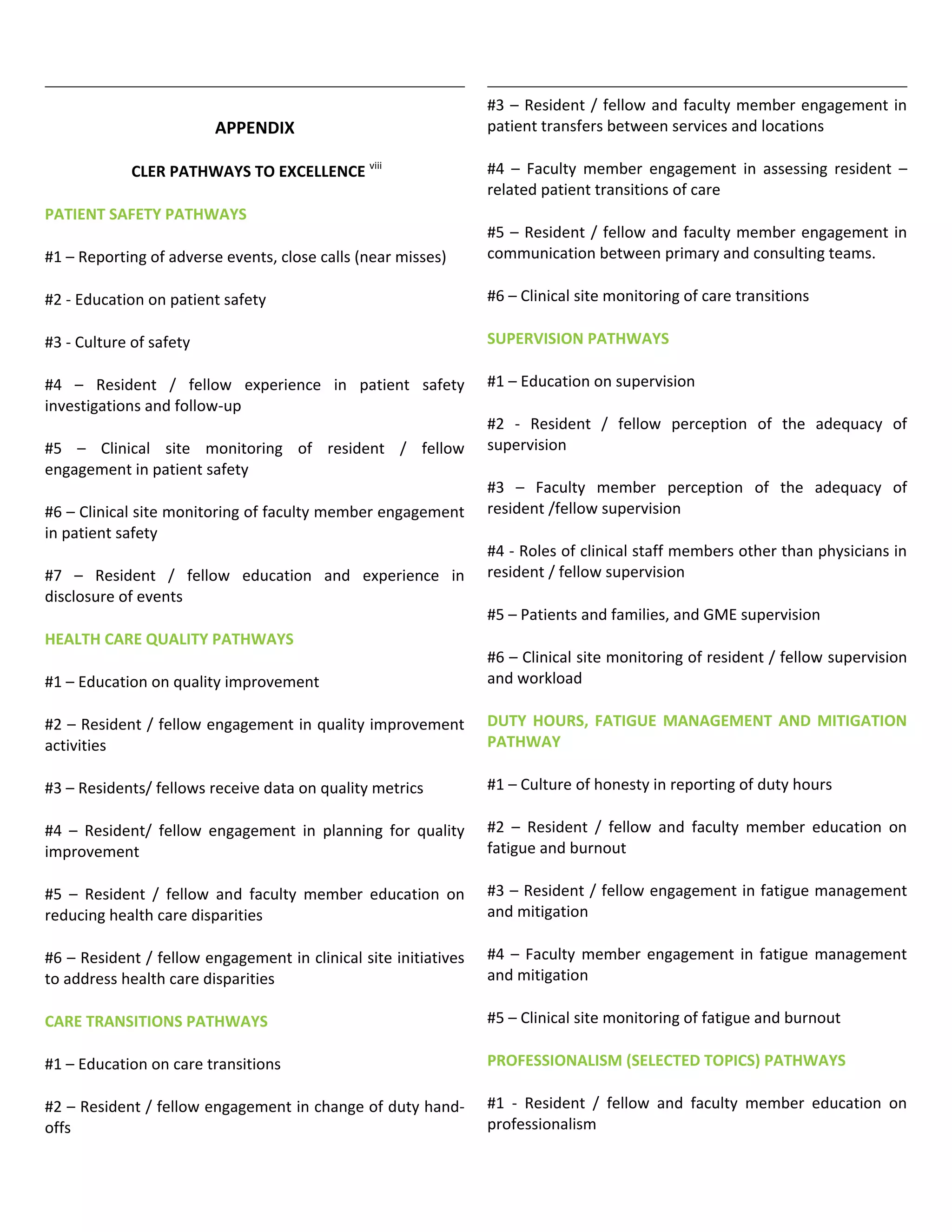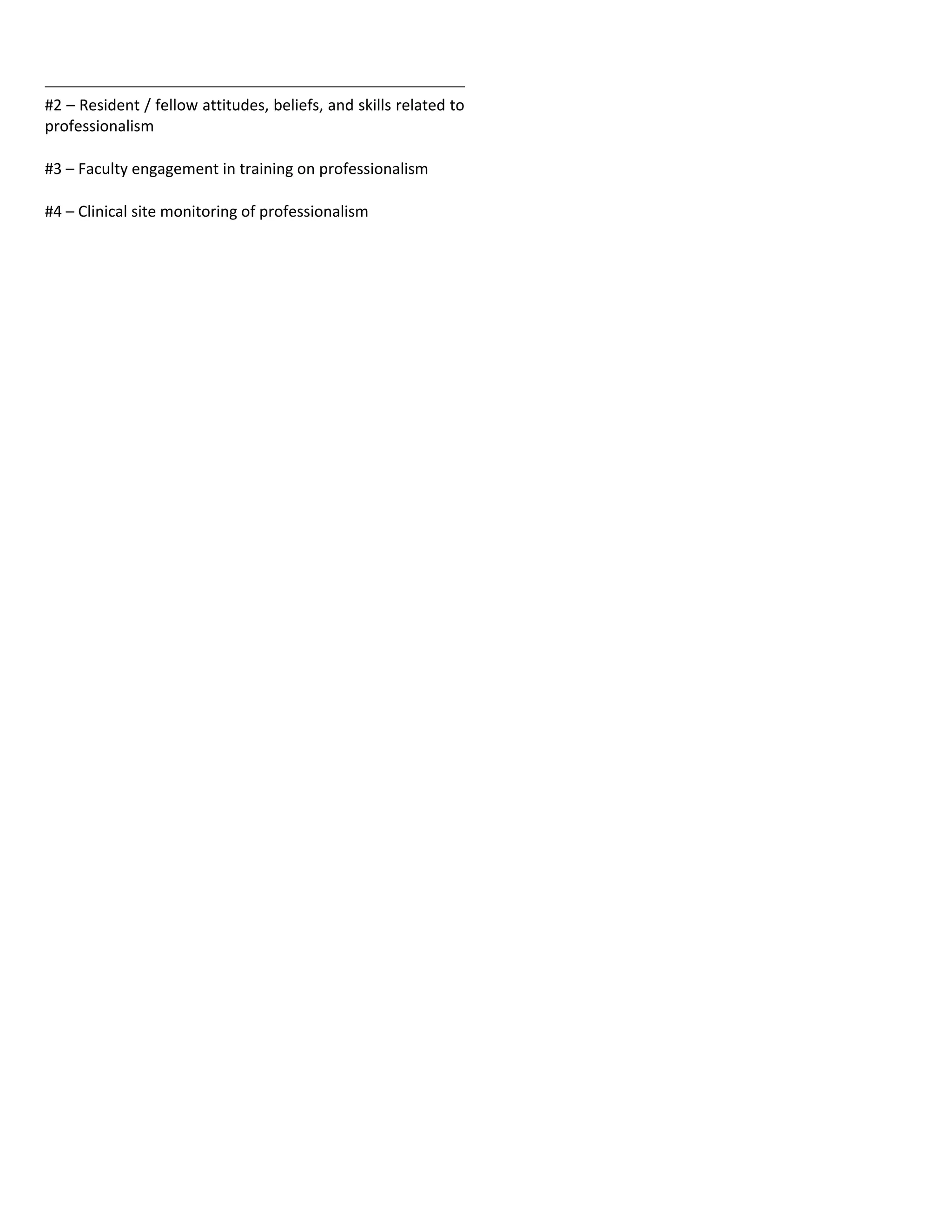The document discusses the Clinical Learning Environment Review (CLER) program created by the Accreditation Council for Graduate Medical Education. The goals of the CLER program are to promote patient safety, healthcare quality, and professionalism among resident physicians. It does this through periodic site visits to evaluate graduate medical education programs based on six core pathways: patient safety, healthcare quality, care transitions, supervision, duty hours and fatigue management, and professionalism. The risk manager's role is to help the institution achieve success in CLER by supporting reporting of safety events by residents, involving residents in quality improvement efforts, and ensuring residents receive education and training in areas like handoffs, disclosure, and professionalism.





